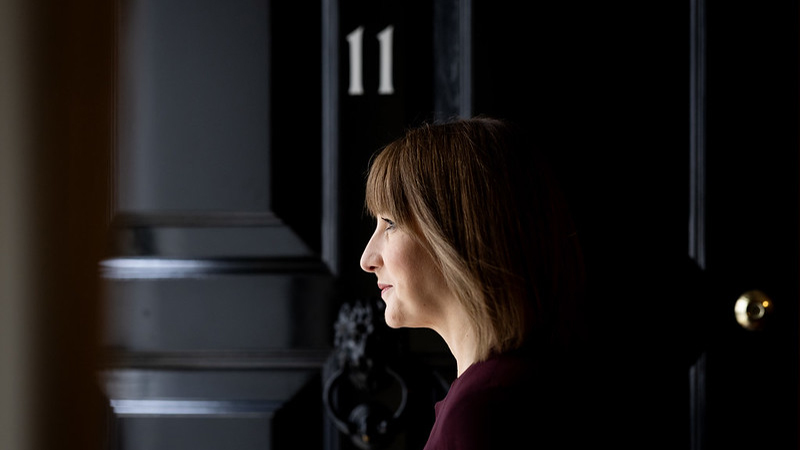Having initially trained as an engineer, Asnani spent five years as a superintendent with the Indian police force.
“I wondered if I could be the world’s best engineer,” he says. “But in school I met people who were a lot smarter than I was. That is when I started thinking I would be better in a managerial role.”
In 2004, he made the transition into finance and, perhaps surprisingly, found the experience he gained patrolling the streets of Trivandrum was applicable in his new career.
“It is like driving at 200 mph and then being asked to drive under the speed limit; it gave me an increased appetite for taking risks and the stomach for stress.”
A new start
A summer internship in the fixed income and credit derivatives division at Morgan Stanley led to a two-year stint as a senior associate at McKinsey & Co, and in 2008 Asnani successfully applied for an analyst role at Matthews Asia.
Two years later he became co-manager of the firm’s US-domiciled Indian equity fund and, in 2012, he was selected as the lead for its Luxembourg equivalent.
“I decided I needed a career that was less product-specific and gave a more general understanding of business,” he says. “I was fortunate that Matthews Asia took the risk and hired me without much experience.”
Having settled on a career path, Asnani then had to contend with his arrival coinciding with the fallout from the global financial crisis.
He explains: “For a period after the financial crisis there was far too much pessimism about India, then investors’ expectations were either too pessimistic or too optimistic.
“Now people have learned to look at both sides.”
As with any emerging market, investor sentiment over India is subject to significant economic growth fluctuations, with current positivity stemming largely from low commodity prices and the expectation of market reforms.
However, Asnani believes that too much weight is placed on such short-term factors. “India’s economy is more diversified than other emerging market countries,” he says.
“Brazil and Russia are still very dependent on commodities. In India, yes, there are mini-crises happening every day, but not of that scale.
“A lot of good things have happened in India without reforms, and those things will continue to happen. Even without reforms, India is still growing at 5%. How many economies have such natural and resilient growth? If the reforms happen then that is the icing on the cake.”
A longer view
While Asnani concedes that Indian valuations looking relatively expensive from a historical perspective may put off some investors, he is confident that wider economic growth will trickle down to corporate earnings.
“If you take a five-year-plus horizon then earnings growth is very resilient,” he says. “The economy is growing at 5-6%, while nominal growth will be around 10-15%. Therefore corporate earnings, if you invest in the right companies, could be 15-20%.
“The average three-year growth of the companies we are invested in has been more than 20%.
“Even if the valuation appears historically average or slightly high, if the outlook does not change in the next five years then earnings growth should support the stock price growth.”
Potential hazards
“Inflation is a tangible risk to investors,” says Asnani. “If Indian inflation is 10% and global is 2%, eventually the currencies adjust.
“India’s inflation is affecting the rupee/ dollar exchange rate. But if the reforms happen then inflation will come down and the currency depreciation will slow down.”
He adds: “However, in that sense the reforms are a short-term risk because people do not seem to be taking them seriously. The Government keeps postponing them but hopefully we will reach a point when we have no option, and then it might happen. That is the way India works – things always take longer than expected unless there is a dire situation.
“The way to avoid that is to find companies with pricing power that can beat inflation and do well in both scenarios. If inflation goes up they will pass it on to the customers; if it goes down they expand their profits.”
Bucking the trend
Despite Asnani’s optimism regarding India’s prospects from a macro perspective, when it comes to investing, he is a stockpicker in the purest sense.
“There is no point in using a macro approach,” he says. “In the short-run it is hard to predict macro issues, inflation, fiscal policy and so on – it is all just noise to me. The more I focus on the fundamentals, the better the service I am doing for shareholders.
“You can take macro trends into account but you must be satisfied with the stock. If you are unable to find a good stock then you should completely ignore the trend. You must accept that you are not the first to look at that trend, and being long-term investors we are probably the last.
“Everyone else has looked at it in such detail that even if you find a good idea it will probably not be investable in the long run because everybody is playing that game.”
He continues: “There are people who look at micro through the macro lens. They do not realise that retail as a sector may not do well in terms of long-term profits. We only look at macro through the eyes of micro.
“The competition is always between good companies and bad companies, not economies. Good companies always attract investment, no matter which economy they are in.”
Time will tell
As well as designating himself as “strictly stockpicking”, Asnani and his 38-strong research team consider companies of all sizes, but will only invest for the long run.
“Investors like to chase stocks that will give them returns for six months to a year,” he says. “But it might take three months to build a small position because of liquidity or whatever, and if that is your time horizon you will not invest in such companies, which is why small and mid-caps are not the darlings of foreign investors.
“Investors have expectations about India, always comparing it with China and other developing markets and trying to invest in the fastest-growing companies. I want to invest in companies with sustainable income because they are not too expensive and will bear fruit for a long time.”
But while Asnani is principally opposed to macro-heavy tactics, he admits there are certain market drifts he must take into account.
An example of wider trends influencing Asnani’s approach was in 2013, when, with a perceived lack of opportunities within the small and mid-cap sectors, two-thirds of his money went into large caps.
“It is an all-cap strategy, but most of the time small and mid-cap as classes are out of favour,” he says. “I know good companies will do well in the long term, regardless of whether they are small, medium or large. But if all investors became long term then I do not think I would be in business.”
Asnani likes to hold 40-60 stocks in his portfolio at any one time. He says: “If we want to preserve our small and mid-cap approach we cannot own too much. Also, if the inflow rate is too fast and we are not able to deploy it then we will run into capacity issues. So there is no fund cap as such but we will soft-close it when we feel it is the right time.”
Off the beaten track
In an average year, Asnani will make three or four trips to India for around two weeks at a time. One of those is spent in Mumbai or Delhi, while the other is dedicated to exploring lesser-known areas, where he looks to unearth gems that tend to slip under the wider investor radar.
But with a portfolio turnover of 10% in the past four years and 5,000 listed Indian companies to choose from, how does he sift through that huge pool?
“Of the 5,000 listed stocks, 85% of those are less than $100m (£67.4m) market cap,” he says. “Out of the remainder there are many that have governance issues or are too dependent on policies, or their business models are not sustainable.
That leaves about 200 stocks, and from those we pick the ones we think are fair-priced and unappreciated.”
Herein lies another instance of Asnani’s stockpicking purity becoming slightly diluted, as to find value he must often head in the opposite direction to the mainstream.
“We try to correct the market bias,” he says. “For example, investors currently have a bias towards large and liquid names, so we buy small and mid-cap stocks. If investors are buying short term, we buy long term. The process is affected by market trends, in that we go where the opportunities are.”
Peak performance
Since its inception in June 2011, the Matthews Asia India Fund has returned 43%, while in the past year it has delivered an impressive 79% (FE Analytics, to 18/03/15).
Asnani singles out 2010 and 2014 – 11% and 32% outperformance against benchmark – as years when small and mid-caps did “extremely well”.
In fact, the only period in which the fund underperformed was the aforementioned year that the majority of Asnani’s investments were in large caps.
“Relative to benchmark, the fund underperformed by about 1% in 2013,” says Asnani. “Small and mid-cap stocks did not do very well and, since we are overly committed to those sectors, we felt that.”











